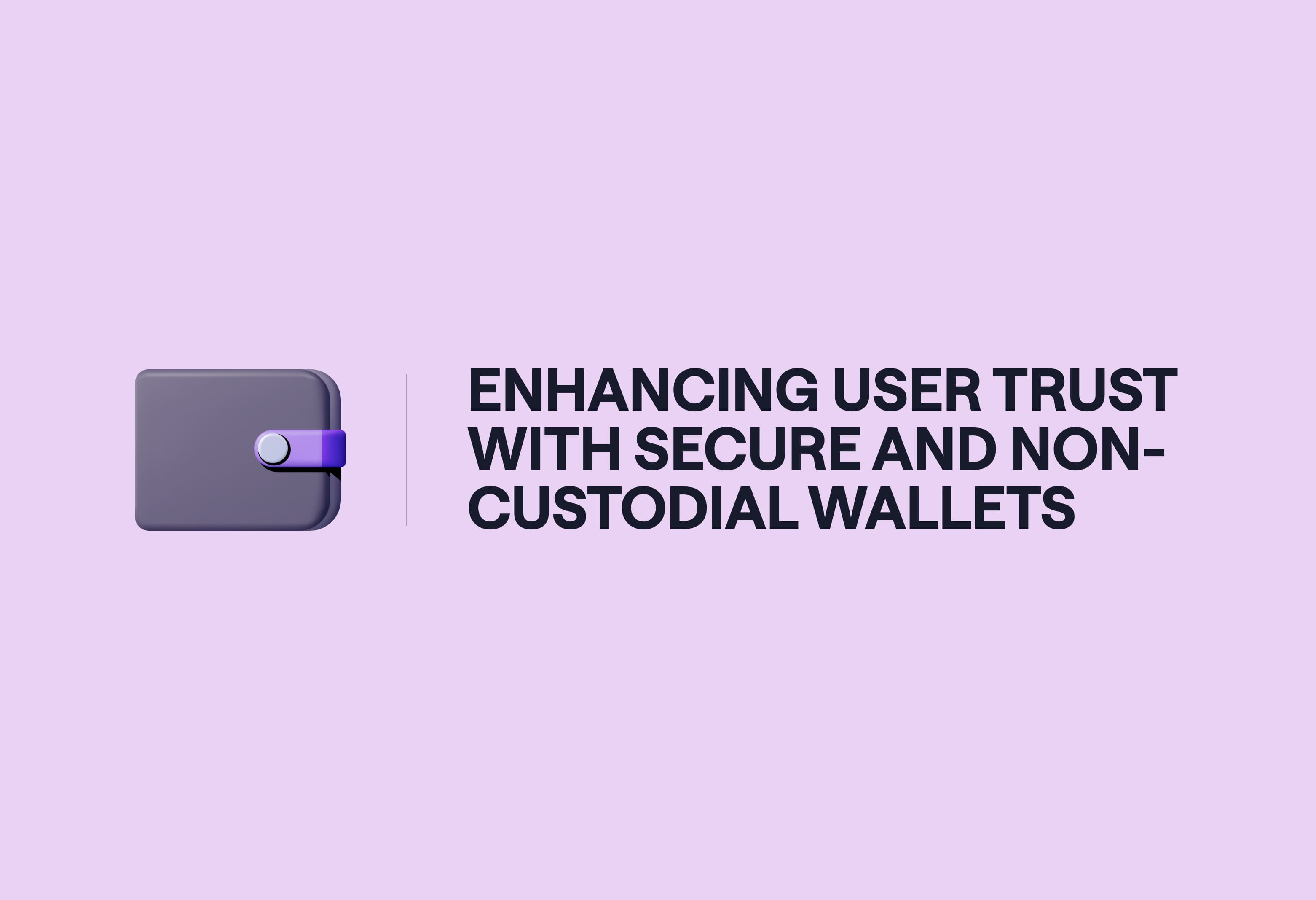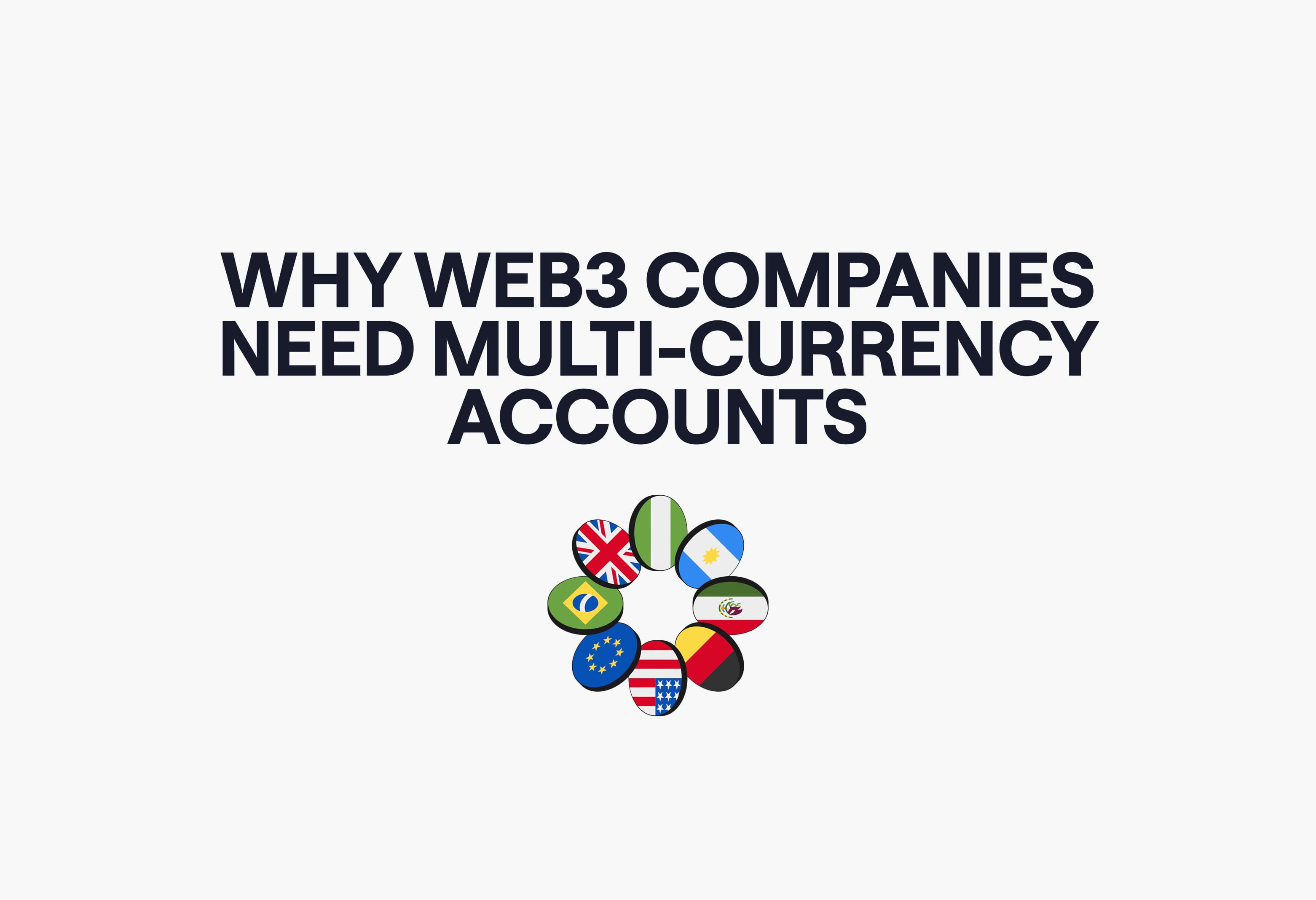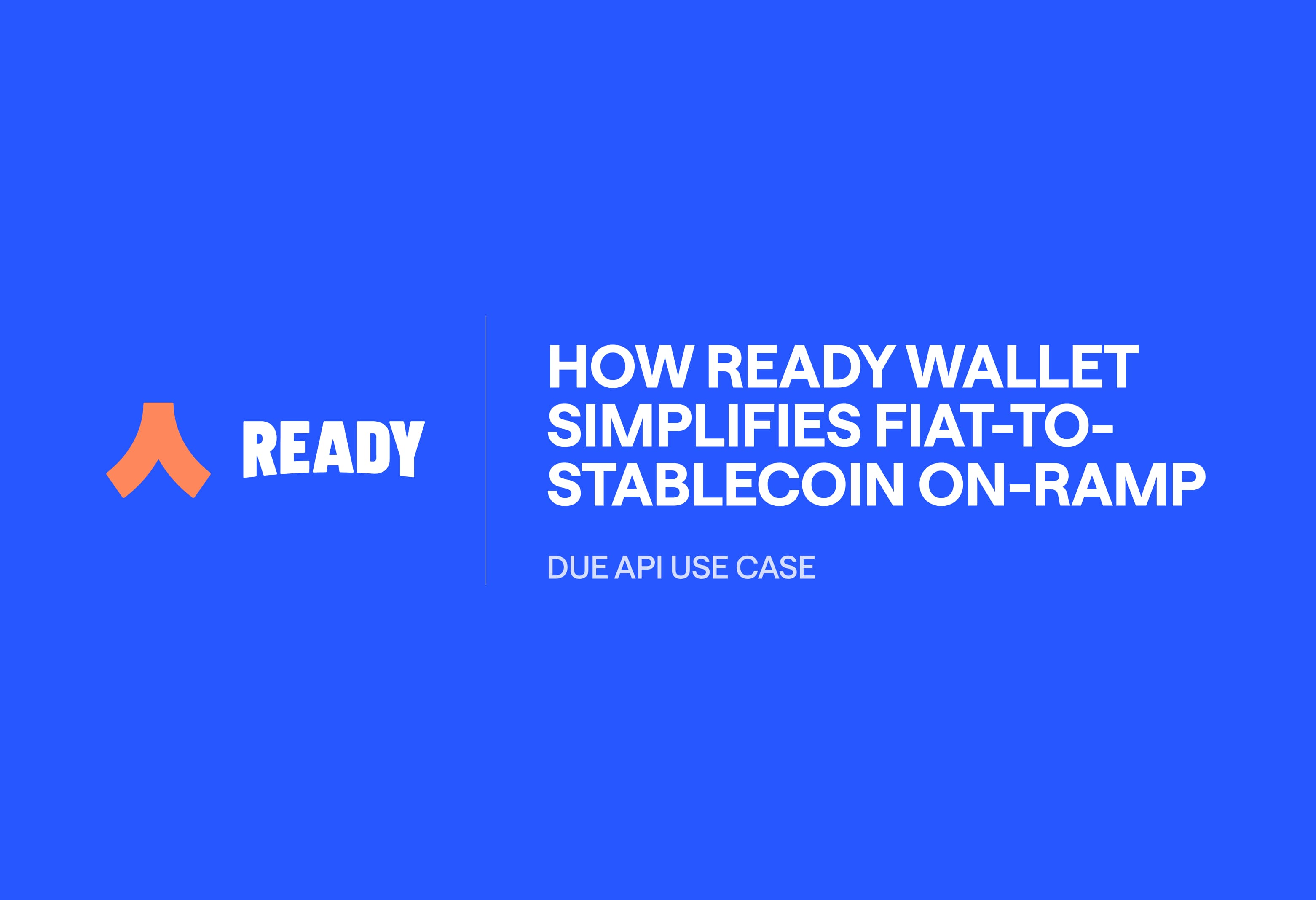
Enhancing User Trust with Secure and Non-Custodial Wallets
Trust is the quiet balance sheet of digital finance. Every transfer, every signature, every settlement either adds to it or draws it down. The last few years made one thing clear: the fastest way to lose that balance is to outsource control of customer assets. The counterpoint is equally clear: a non-custodial wallet, designed as a secure crypto wallet from first principles, puts control where trust begins: in the user’s hands. That is the design stance Due takes: advanced biometrics, robust recoveries, and cryptographic controls, wrapped in a fully non-custodial crypto wallet so the keys remain with the user, not the platform.
Why Trust Matters in Digital Finance
The Risks of Custodial Solutions and Centralised Exchanges
Centralised rails promise convenience. They also concentrate risk. When a platform holds private keys, users carry counterparty, operational, and legal exposure that they cannot fully price. The trade-off plain: hosted wallets offer easy recovery and support, but introduce exchange-hack and insolvency risk; self-custody wallet setups remove that risk but demand disciplined key management.
For business leaders, the trust equation is broader. They must ask: who can freeze a transaction; under what jurisdiction; at what point in a cross-border flow; and with what recourse? A non-custodial wallet for business reduces the number of hands that can touch funds between invoice and settlement, and replaces opaque processes with verifiable cryptography. It isn’t just ideology; it’s risk engineering.
How Self‑Custody Builds Confidence Among Users
A different philosophy guides non‑custodial and self‑custody wallets. The mantra “not your keys, not your coins” distils a simple truth: whoever controls the private keys controls the assets. Non‑custodial wallets put those keys in the user’s hands, eliminating the need to trust a third party. Due’s platform is built on decentralised networks and provides fully non‑custodial accounts.
Users maintain complete ownership of their funds for ultimate security and independence. The ability to authorise transactions directly, without approval from an exchange, empowers individuals and businesses to operate with confidence and transparency. In the words of one educational resource, self‑custody is “the essence of a non‑custodial wallet,” where private keys are central to crypto security.
What Is a Non‑Custodial Wallet?
Difference Between Custodial and Non-Custodial Wallets
At its core, a non‑custodial wallet, also called a self‑custody wallet, is a tool that allows users to act as their own bank. It generates a pair of cryptographic keys and a seed phrase on the user’s device. Only the holder can authorise transactions, and there is no recovery service if the keys are lost. Custodial wallets, by contrast, delegate key management to a third party. The differences matter for security, privacy and control.
These distinctions illustrate the trade‑offs. Custodial wallets provide convenience and professional security but introduce dependence on the provider’s solvency and compliance. Non‑custodial wallets offer autonomy and greater crypto wallet security but demand user diligence.
Private Keys, Seed Phrases, and User Control
A good, secure Bitcoin wallet or Ethereum wallet makes the private key accessible but never unobtrusive. That means clear prompts for creating and verifying a seed phrase, guidance on offline storage, and support for hardware signing. Store the seed offline; consider multi-sig or hardware for material balances; and enable strong local authentication.
The Security Advantages of Non-Custodial Wallets
Elimination of Third-Party Risks
One of the most powerful arguments for non‑custodial wallets is the elimination of counterparty risk. By keeping funds under the user’s control, these wallets protect against exchange hacks, custodial failures and regulatory freezes. Non-custodial wallets “eliminate third‑party risks entirely. Users authorise transactions themselves, which means there is no central database for hackers to attack. There are still trade‑offs: losing a seed phrase or falling for a phishing scam can result in irrecoverable loss. However, for those willing to follow security best practices, the protection against large‑scale failures is compelling. With non‑custodial wallets, the only person who can freeze or confiscate funds is the owner.
Transparency and Decentralisation as Trust Drivers
Trust also depends on transparency. Non-custodial wallets support the original ethos of crypto, which is to protect self-sovereignty and support trustless transactions. Non-custodial wallets “support the original core philosophy of the crypto movement, self-sovereignty and trustless transactions”. Because the transactions are made directly on public blockchains, anyone is able to query the ledger to confirm transfers, thereby establishing transparency. Similarly, decentralised networks significantly reduce the risk of censorship and government seizure, because there exists no centralised ownership of the ledger.
Due builds off that foundation; by using decentralised networks and stablecoins, they provide a service for multi-currency accounts for consumer pieces and merchant acquiring services, all while offering users complete control of their assets without a third party. This transparency means that users and the company can feel more assured that their money is being processed at the speed they expect.
Statistics of the market highlight the increasing trust in non-custodial solutions. The global cryptocurrency wallet market is valued at $12.59 billion in 2024 and projected to increase to $100.77 billion by 2033, with the non-custodial segment growing at a compound annual growth rate of 26.3%. This growth shows increased institutional usage and a shift towards self-custodial, as DeFi protocols and on-chain finance show significant traction.
Biometric and Multi‑Factor Authentication Trends
In 2025, a secure crypto wallet is increasingly invisible to the user. Non-custodial apps employ device biometrics, multi-factor checks, and hardware signing to bind the real person to the real key without centralising secrets. Due’s design reflects this shift: advanced biometrics and recoveries layered onto a non-custodial core. For new networks, users can connect existing wallets or open a new non-custodial wallet with biometric key features, so security doesn’t become a barrier to entry.
How Non-Custodial Wallets Enhance User Trust
User Empowerment (“Not Your Keys, Not Your Coins”)
Users trust systems they can verify and control. A self-custody wallet lets them authorise spending, see signatures, and understand finality. That sense of agency matters in high-volatility moments and in high-velocity commerce.
Greater Transparency for Individuals and Businesses
Non-custodial flows are signed locally and broadcast to public networks, leaving a visible audit trail. That advances user trust in crypto wallets in two ways: activity is verifiable, and disputes are fewer. Transactions are signed with cryptographic keys and recorded on public ledgers. FinTech Weekly highlights that managing private keys enables “true self‑custody” and ensures that no third party can exercise control over the assets. Due extends this ethos to businesses: its global payment platform allows merchants to accept payments from bank transfers, mobile money, digital wallets and on‑chain transactions across more than 50 markets. Settlements occur instantly in USDC or same‑day in local currency, while digital payments are “irreversible and fraud‑proof by nature,” eliminating chargeback costs and lost revenue. Because funds move on public blockchains and stablecoin networks, businesses gain real‑time visibility into cash flows, a level of transparency difficult to achieve with legacy payment processors.
Compliance-Friendly Design Without Compromising Control
It’s easy to assume self-custody and regulation sit at opposite ends of the table. They don’t. With the right architecture, a non-custodial wallet can protect private key ownership while meeting the letter and the intent of modern rules.
In Europe, the Markets in Crypto-Assets Regulation (MiCA) and the updated Transfer of Funds Regulation (TFR) now anchor the regime. MiCA sets licensing, governance, disclosure and consumer-protection baselines for crypto-asset service providers across all 27 EU states. The TFR extends “Travel Rule” obligations to crypto transfers and requires additional checks when funds move to and from unhosted wallets (including wallet-ownership verification above the €1,000 threshold). Together, they create a single, predictable playbook for registration, risk management and customer communications, without demanding that providers take custody of user keys.
The United States has moved in parallel, but with a different emphasis. In July 2025, Congress passed and the President signed the GENIUS Act, the country’s first federal statute focused squarely on payment stablecoins. The law requires 100% reserves in cash or short-term Treasuries, mandates public reserve disclosures, places issuers under BSA/AML obligations, and clarifies that permitted payment stablecoins aren’t treated as securities. Foreign issuers can participate if their home regimes are deemed comparable. For businesses, that means a clearer path to dollar-denominated settlement while keeping self-custody intact at the wallet layer, directly addressing the question “are non-custodial wallets good for businesses” with a practical yes.
Zooming out, the message is consistent across jurisdictions: regulators want transparency, auditable flows, and accountable intermediaries, not universal custodianship. A compliance-first non-custodial crypto wallet can satisfy those aims by (1) performing KYC/AML at onboarding and at fiat on/off-ramps; (2) attaching Travel-Rule data to transfers when required; (3) verifying ownership for unhosted-wallet flows above set thresholds; and (4) maintaining clear incident, sanctions, and reporting processes. None of that requires a provider to hold the user’s keys, and that’s precisely the point of crypto wallet security done right.
Custodial vs Non-Custodial Wallets: What Businesses Should Know
Pros and Cons for SMBs and Enterprises
- Custodial strengths - centralised support, easy card/fiat integrations, familiar ops.
- Risks of non-custodial wallets - counterparty exposure, freeze risk, omnibus-account ambiguity, and potential delays in stress events. Terms, segregation, and platform control shape outcomes in disputes.
- Non-custodial strengths - user-level control, clear asset title on-chain, resilience to platform failures.
- Non-custodial risks - operational discipline required (backups, device hygiene, role-based approvals).
For many teams, the winning model in the custodial vs non-custodial wallet debate is hybrid: keep keys user-side, but add enterprise guardrails, approval policies, per-role limits, and audit trails.
Case Examples of Adoption in Fintech and E-commerce
This is where Due’s approach is practical. Merchants can accept familiar local methods, bank transfer, mobile money, and receive USDC, EURC or USDT without forcing customers to become crypto experts. Settlement is fast, with non-custodial delivery to the business wallet across major networks (Ethereum, Polygon, Arbitrum, Optimism, Tron), and routing is optimised for cost/speed. That’s useful for ecommerce payouts, supplier invoices, and cross-border payroll.
Best Practices for Choosing a Secure Non-Custodial Wallet
Open-source Code and Audits
Prefer wallets with transparent code and independent reviews. Public scrutiny is a security feature, not a press release. If you cannot see how keys are generated, stored, and used, you cannot fully trust the system.
Security Features: Biometrics, Multi-Sig, Hardware Support
A secure crypto wallet should support local biometrics, hardware signing, and (for larger balances) multi-signature policies that distribute approval across devices or people. For businesses, add rule-based approvals, limits, and activity monitoring to reduce single-point failure risk.
Ease of Use and Integration Potential
Usability earns adoption. The best non-custodial wallet 2025 blends serious security with low-friction flows: clear backup prompts, straightforward fee displays, and helpful error handling. On the enterprise side, Due’s API provides the primitives for non-custodial settlement while keys remain client-side; customers implement their own policy controls, roles, limits, and approvals within their existing checkouts or back-office systems, without redesigning the entire stack.
Why Due’s Wallet Architecture Builds Trust
Secure by Design: Non-Custodial Approach
Due takes a first-principles stance: the platform is non-custodial and the signer/key stays with the client, either as a Passkey (biometric, security key, etc.) or a private key embedded in the device/app. We use DFNS as our MPC provider and operate a delegated wallet setup, layering biometrics and recovery options for safety. Due’s smart contracts handle authorisation and policy primitives, while our relay service moves funds on-chain (and can sponsor network fees where applicable). The result is the essence of a secure Ethereum wallet or secure Bitcoin wallet for everyday operators, not just crypto-natives.
Enterprise-Ready for Payments and Settlements
On the business side, Due’s non-custodial wallet ties directly into payments: accept familiar local rails, settle to stablecoins on major networks, and route optimally for speed or fees. This reduces FX leakage and settlement latency, while custody remains with the merchant. Integration is fast, compatible with diverse wallet setups and configurable in minutes, making it practical for pilots and phased rollouts.
Balancing Compliance with User Control
Due’s international structure illustrates a thoughtful approach to regulation. The company is registered as a virtual asset service provider in Bulgaria, regulated by the National Revenue Agency, operates as a money services business in Canada under FINTRAC, is registered with the Bank of Spain and has legal entities in England and the United States. It partners with licensed financial institutions while making clear that it is not a bank. This multi‑jurisdictional framework, combined with a non‑custodial design, ensures that users retain control of their funds while the platform adheres to regulatory expectations. In the EU, firms offering crypto services must comply with MiCA, TFR and related rules, so Due’s registration and compliance infrastructure provides reassurance to European businesses.
Implementation note: Due’s API and contracts provide the primitives for approvals/limits/roles; clients implement their own policy controls on their side.
FAQ — Non-Custodial Wallets and User Trust
What is a non-custodial wallet, and why use it?
A non-custodial wallet generates keys locally and lets you sign transactions on-device. The app never sends your private key to a server; the chain records your transfers. Lose the key/phrase, and recovery depends on the backup you created.
Are non-custodial wallets safer than custodial wallets?
Non‑custodial wallets mitigate the risk of hacks at an exchange or bankruptcy at a custodian because you control your keys, and there is no third party involved. They provide for more privacy, and they do not impose withdrawal limits. However, non‑custodial wallets require individuals to control their own security, and if you lose your seed phrase or become a victim of phishing, then it is permanent. Custodial wallets offer the best convenience and recovery services, but they expose customers to counterparty risk.
What are the risks of using a non-custodial wallet?
Human error (poor backups), device compromise (malware), and social engineering. Mitigations: hardware signing for meaningful balances, multi-sig for team funds, offline seed storage, and biometric + passcode on devices.
Can businesses use non-custodial wallets effectively?
Yes. Platforms like Due offer non‑custodial infrastructure with enterprise‑grade features. Businesses can hold funds in stablecoins, accept payments from multiple networks and currencies, and settle quickly while maintaining control. Non‑custodial design aligns with DeFi and cross‑border commerce, enabling companies to tap into global liquidity without relying on exchanges.
How do non-custodial wallets improve trust in payments?
By eliminating intermediaries, non‑custodial wallets foster transparency and reduce the risk of fraud or insolvency. Transactions are signed and broadcast directly to the blockchain, where they can be verified publicly. Platforms like Due combine this trust model with user‑friendly features, biometric authentication, global payment acceptance, and fast settlements, to make crypto payments as reliable as traditional methods. When users know that only they can move their funds and that the system is auditable, they gain confidence to transact freely.
- Custodial vs. Non-Custodial Crypto Wallets — Kraken Learn
- What Is a Non-Custodial Wallet? — ICONOMI
- Crypto Wallet Market Size, Share & Trends (2025–2033) — Grand View Research
- EU Crypto Regulation Explained (2025) — InnReg
- EU Transfer of Funds Regulation (Travel Rule) — Tangany Overview
- EBA Guidelines on the Travel Rule (Regulation (EU) 2023/1113) — PDF





